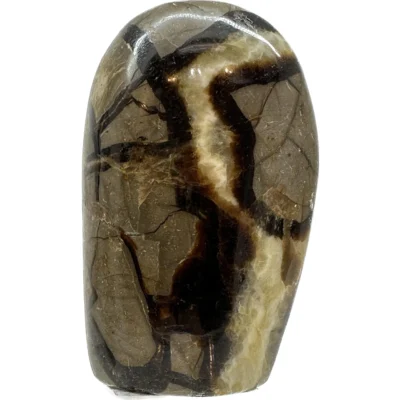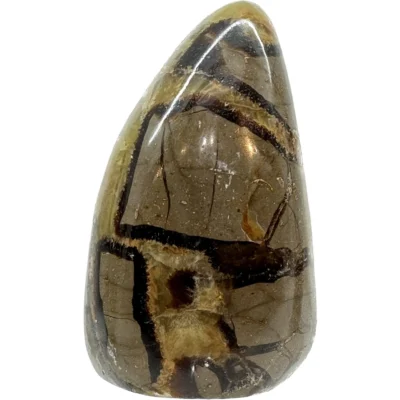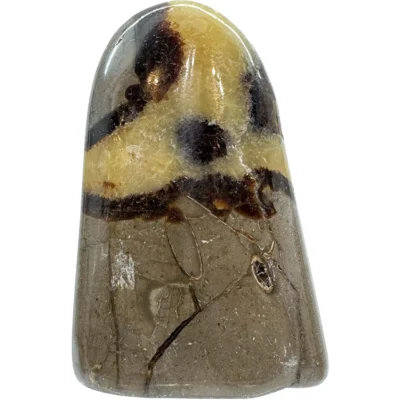Showing 41–43 of 43 results
Septarian refers to a type of sedimentary rock that contains distinctive patterns of cracks filled with minerals. These cracks, known as septaria, form during the sedimentary rock’s formation process. Septarian nodules or concretions typically consist of a mix of minerals, including calcite, aragonite, barite, and gypsum, among others. The name “septarian” comes from the Latin word “septum,” meaning “partition,” referring to the cracks that divide the rock into sections.
Septarian nodules often have a distinctive appearance, with a gray to brown outer surface and a striking pattern of radial cracks filled with contrasting mineral deposits. The colors and shapes of these mineral-filled cracks can vary widely, creating visually captivating and intricate patterns within the rock.
Septarian nodules are commonly found in sedimentary rock formations, particularly those formed in ancient seabeds or mudflats. They are often discovered in regions with abundant marine or lacustrine sedimentary deposits, such as Utah in the United States, Madagascar, and parts of Europe.
Septarian nodules have long been prized by collectors and lapidaries for their unique appearance and aesthetic appeal. They are commonly polished and shaped into decorative objects, bookends, spheres, and cabochons for use in jewelry and ornamental pieces. Additionally, septarian nodules are sometimes sliced and polished to reveal the intricate patterns of mineral-filled cracks, creating striking display pieces and conversation starters.
Metaphysically, septarian is believed to possess grounding and protective properties. It is associated with promoting harmony, balance, and emotional stability, making it a popular stone in crystal healing and spiritual practices.




